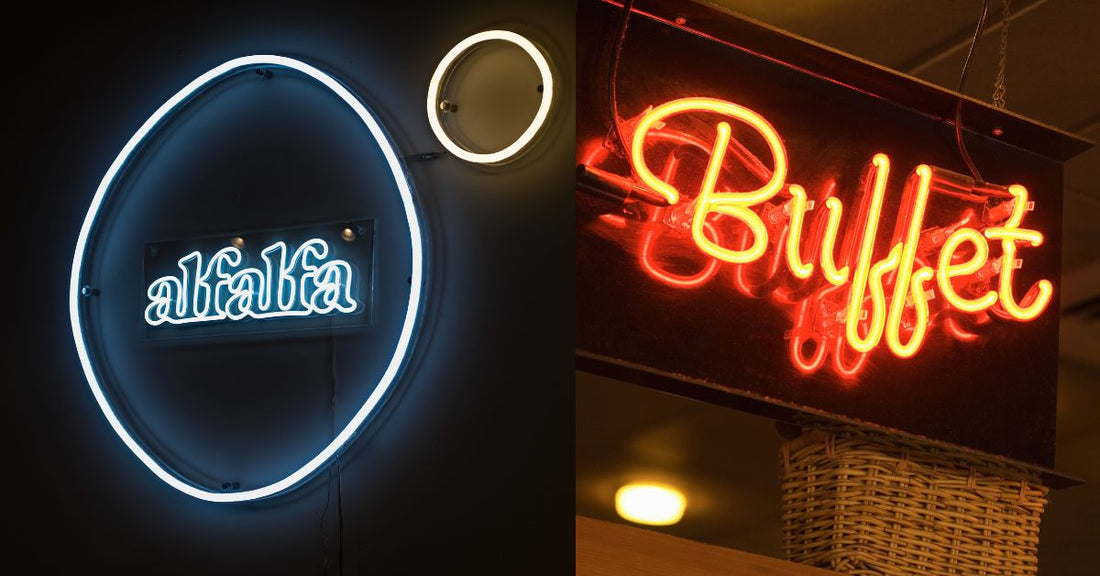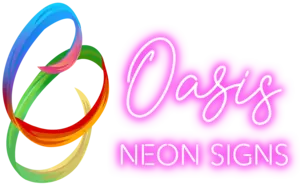
Why Do Restaurants Have Dim Lighting? Top Reasons
Share
This question often arises in the mind of the diner while trying to read a menu in the angelic dim candlelight or trying to pierce through the moody ambiance of the eatery: "Why do restaurants maintain dim lighting?" What appears to be the premises of aesthetic decision-making stands upon a much deeper ground, covering psychological, marketing, and guest experience matters.
Purpose of Dim Lighting in Restaurants
Create Ambiance and Intimacy
Dim lighting is a powerful tool employed to characterize a restaurant's atmosphere. It provides an intimate ambiance where guests feel comfortable with the environment and emotionally engaged. Lowering the light level softens the surroundings, creating a space where diners can settle down at a slow pace. Romance or tired meet-ups with friends thrive on dimness; so, conversation flourishes with emotional comfort.
Lighting tells a story insofar as it forms part of a restaurant's identity; an upscale steakhouse might opt for amber shades to convey exclusivity, whereas a hip bistro could feature Edison bulbs put in low for a rustic-rat-worthy look. The ambiance, very quietly, "speaks" all the words with persuasion.
Enhancing Food Presentation

Ironically, dimmer lighting tends to make food appear better than in bright light. In dim illumination, shadows lend shape, textures barely cling to view, and warm colors seem to be heightened. This effect will only increase the advantages of food presentation, making the dishes appear richer, fresher, and off-the-record indulgent.
Chefs and restaurateurs understand that appearance matters look good tastes better. Soft lighting can hide any imperfections on the plate while emphasizing good colors, such as golden browns or crimson reds, that make food look more arresting to the eye.
Luring Longer Staying and Spending
The dimly lit environment encourages one's presence longer. When comfortable, people usually don't hurry through quick meals. If they linger, they are more likely to order dessert and go for a couple more drink orders or one more bottle of wine.
The dim light setup is designed to subtly affect patrons' behavior. It aids a slow dining pace that aligns with the average spend-per-table traits that the restaurant wants. This strategy is not aggressive; it creates an experience in which time feels good to be wasted.
Neon Signage for Visual Interest and Branding

More and more neon sign and ambient LED lighting have found ways into contemporary restaurant interiors and enhanced ambiances created in dim lighting settings. These are elements that serve as the beacon for branding, storytelling, and creating photo-worthy corners. In a dim-lit setting, the neon provides focus yet never overpowers the ambiance.
Custom neon can play up brand slogans, highlight signature menu items, or boast witticisms appreciated by patrons. Similarly, custom bar neon lights can be tailored to match a venue’s unique vibe, turning ordinary walls or counters into glowing focal points that elevate both style and customer experience. Done correctly, it garners social sharing on Instagram and TikTok, creating a buzz that helps extend the reach of brand marketing sans the dim lighting aesthetic.
Lowering Stress and Improving Comfort
Fluorescent lighting is harsh and overstimulating. Dim light reduces glare and visual fatigue. The lowering of cortisol levels relaxes bodies while instilling serenity.
Many join restaurants just to decompress after a stressful day. Dim lighting supports that need by calming the senses into a pleasurable experience. A positive mood is then set in place for recording any good first impression with the brand, which increases that chance of returning.
Signaling Sophistication and Exclusivity
In and of itself, dim lighting establishes a more sophisticated tone. It speaks of an experience hastily curated, special, and even rushed. Fine dining, in particular, uses dim light access to offer exclusivity to their guests.
The artfully tailored dim-light surroundings, by contrast, elevate the ambiance from one of the simple fast-food outlets, or casual hunger outlets with limited dim light. These subtle visual cues- crystal glassware catching candlelight, white linens softly glowing, attract luxury in anticipation of the forthcoming meal.
Hiding Imperfections
Periodically there are little imperfections across the restaurant. Very practical dim lighting helps disguise such injustices-worn furniture, slight stains, and faintly aged decor. By not drawing attention to such flaws, restaurants can preserve their appeal without undergoing the exhausting grind of renovations.
Dim light just makes diners look good. It reduces hard shadows from faces, evens out skin tone, and adds a nice glow to the effect of feeling attractive and confident. This makes them feel giddy, enhancing the experience.
Balancing Visibility
While dimness remains a goal, it may not compromise functionality. Strategic layering must yield some areas applicants can still use for menu reading, for seeing the food loudly, and for easy pathway negotiation. Lighting designers work off combinations of pendant lights, recessed lights, and candlelight to remain on-task with such goals.
Task lights above tables or the bar can have the lamps directed downward to spotlight food with the surrounding area left at a comfortable dim. Such contrasts keep the mood alive without losing practicality, granting both ambiance and execution.
Lighting Color Temperature
Lighting color temperature, warm or cool, greatly impacts the whole eating experience. The majority of restaurants lean towards warm white (2700K–3000K) lighting to imbue the general atmosphere with a mild welcome and natural glow. It is sufficiently soft on the eyes to complement the skin tone and colors of food.
Cooler tones would feel sterile or clinical and would better suit commercial spaces. Warm lighting is the reason behind comfort as well as the guiding force inducing the response of most emotionally responsible diners to stay, engage, and savor.
Lighting Adaptations for Different Meals
Restaurants often keep their daylight-dependent lighting schemes. Rooms hosting brunch services may be exposed to a lot or a bit of diffused daylight, while new layers of wine glass soothing ambiance have come in for dinner.
A smart lighting system today allows restaurants to automatically pre-program such transitions. As sunlight fades away, lights dim perfectly, transforming the space into an evening mood without delay. Such management will help energy management and set different moods during different hours of service.
Energy Efficiency and Cost Considerations
From a business perspective, dim lighting might bring energy conservation into play. It uses dimmer bulbs and energy-commercial LEDs in far fewer fixtures to offer a cheaper rate of power consumption. Candlelight and little LED spotlights are cheaper to operate compared to the fluorescent system set up for the complete room.
Furthermore, maintenance costs for lighting do decrease. Installation of LED bulbs in dimmable lighting settings, as chosen by most restaurants, yields good results since they last a long time before maintenance. This also leans toward supporting sustainable development-oriented goals and modern green beverage restaurant practices.
Historical Evolution of Restaurant Lighting
The focus of restaurant lighting in the early 20th century was mostly on working efficiency, not ambiance. Gas lamps and later incandescent bulbs were designed simply to brighten the room. In contrast, as eating became more of a social experience, the concept of lighting slowly evolved; fine-dining restaurants began to experiment with chandeliers, candles, and sconces to set a luxurious glow.
By the 1970s and 80s, mood lighting turned into an essential design element, especially for lounges and theme restaurants. Presently, lighting is a major contributor to a restaurant's brand identity, marrying aesthetics with comfort and a story that modern-day customers would expect.
Modern Technologies and Lighting Trends
Today, technological advancements have changed the way restaurant lighting is considered. Smart-lighting systems offer great flexibility during the day through automation where brightness or color temperature can be programmed to change automatically with regard to time, weather, or customer flow. This creates ambiance while supporting energy efficiency.

Dimmable LED fixtures and color-tunable bulbs controlled exclusively from one's smartphone give the restaurateur all the finesse needed to create the right mood for their guests; these days, lighting designers and consultants are regularly included as part of the design team to ensure the established lighting fits the target brand goals, audience preferences, and changing dining trends, namely the demand for photogenic social media moments.
The Psychological Perspective Behind Marketing and Dim Restaurant Lighting
Lighting is a psychological cue that forces upon behavior without saying a word. Dim light slows us down, lowers alertness, and may induce introspection. This, therefore, leads to diners paying greater attention to their food, savoring the flavors, and being concerned with the people around them.
From a marketing perspective, dimly lit restaurants photograph better for social media. The contrasts and glow intensify the mood in a way that looks exclusive and inviting, making visual storytelling a bonding tool during branding to lay a "feel" for the customer to associate with the experience.
Now studies carried out show that people tend to order more indulgent items in dimly lit spaces. This feeling of "privacy" seems to encourage customers to freely make choices without feeling judged. This information is second to none for any upscale restaurant that is looking at improving dessert or alcoholic drink sales.
Challenges and Criticisms of Dim Lighting in Restaurants
There are disadvantages of dim light, opposite to its benefits. Accessibility is a prime criticism. Elderly visitors or those with visual impairments might find dim settings uncomfortable or, worse, an outright safety hazard. It could affect their ability to read menus, walk out of the building, or have a comfortable time eating.
The other thing would be functional issues with inconsistent lighting design. If a restaurant can neither offer a brighter ambiance nor a depressed one, it will become a huge barrier for customers who want to see their food or interact with the restaurant staff. The perception of cleanliness and professionalism can also get tarnished if restrooms or entrance areas are poorly lit.
Another issue is related to restaurant dunks for being a haven for social sharing and photography. Mood lighting looks appealing on social media, but if it is just too dark, dark, and gloomy, then you are looking at grains and less-than-flattering snaps. Limiting the capture of pictures of one's food or ambiance will, therefore, indirectly hurt the marketing reach.
Lastly, dim lighting has a stigma of being manipulative; it sometimes coaxes you to pay more or distract you from something else. In the wrong context and if not properly thought through, all it does is create a pretentious air, the last thing one should ever associate with dimly lit spaces; from there, it becomes a thin line between artists and enemies of the customer.
Conclusion
Why do restaurants have dim lighting? The spotlight is finally cast on those areas of design that lie in the pockets of psychology and aesthetics plus business! Dim lighting moves from being just a design element to a definite player in creating an ambience from the very start of the food experience down to the end: from enhancing food appeal to improving sales.
Looking into the future, restaurant lighting taps into adaptive technologies for deeper personalization. As customer tastes change ahead, it will be those restaurants that continue to rethink their lighting not just for utility or glamor but for knitting together meaningful and memorable moments in dining.

